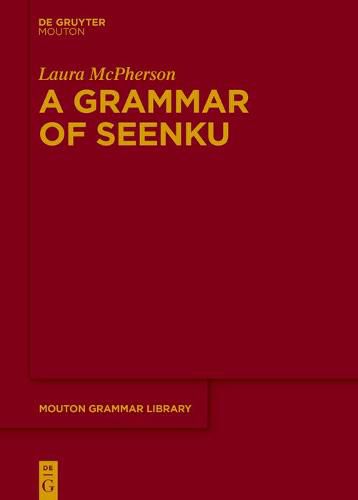Readings Newsletter
Become a Readings Member to make your shopping experience even easier.
Sign in or sign up for free!
You’re not far away from qualifying for FREE standard shipping within Australia
You’ve qualified for FREE standard shipping within Australia
The cart is loading…






This title is printed to order. This book may have been self-published. If so, we cannot guarantee the quality of the content. In the main most books will have gone through the editing process however some may not. We therefore suggest that you be aware of this before ordering this book. If in doubt check either the author or publisher’s details as we are unable to accept any returns unless they are faulty. Please contact us if you have any questions.
Seenku is a Western Mande language of the Samogo group spoken in southwestern Burkina Faso by approximately 17,000 speakers. It has undergone a lot of phonological reduction, leading to a rich segmental and tonal phoneme inventory but mainly mono- and sesquisyllabic roots. The language has four contrastive levels of tone that combine to create over a dozen contours. Tone has a high functional load lexically and grammatically, permeating all aspects of grammar. Most verbs have two stem forms: a realis form and an irrealis form. The realis is derived from the irrealis by infixing a high vowel before the stem vowel, creating a diphthong. The use of a particular stem form is determined by aspect and construction type, but most other morphosyntactic meanings (e.g. progressive aspect or causative) are expressed analytically. Like most Mande languages, Seenku has an S Aux O V X word order in addition to areal clause-final negation. It displays a reduced set of post-subject predicate markers compared to other Mande languages, and those that are attested are variably realized only by tone changes and lengthening on the subject itself.
$9.00 standard shipping within Australia
FREE standard shipping within Australia for orders over $100.00
Express & International shipping calculated at checkout
This title is printed to order. This book may have been self-published. If so, we cannot guarantee the quality of the content. In the main most books will have gone through the editing process however some may not. We therefore suggest that you be aware of this before ordering this book. If in doubt check either the author or publisher’s details as we are unable to accept any returns unless they are faulty. Please contact us if you have any questions.
Seenku is a Western Mande language of the Samogo group spoken in southwestern Burkina Faso by approximately 17,000 speakers. It has undergone a lot of phonological reduction, leading to a rich segmental and tonal phoneme inventory but mainly mono- and sesquisyllabic roots. The language has four contrastive levels of tone that combine to create over a dozen contours. Tone has a high functional load lexically and grammatically, permeating all aspects of grammar. Most verbs have two stem forms: a realis form and an irrealis form. The realis is derived from the irrealis by infixing a high vowel before the stem vowel, creating a diphthong. The use of a particular stem form is determined by aspect and construction type, but most other morphosyntactic meanings (e.g. progressive aspect or causative) are expressed analytically. Like most Mande languages, Seenku has an S Aux O V X word order in addition to areal clause-final negation. It displays a reduced set of post-subject predicate markers compared to other Mande languages, and those that are attested are variably realized only by tone changes and lengthening on the subject itself.